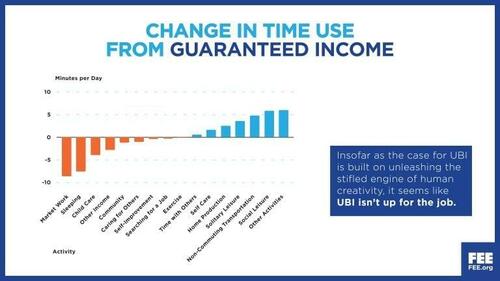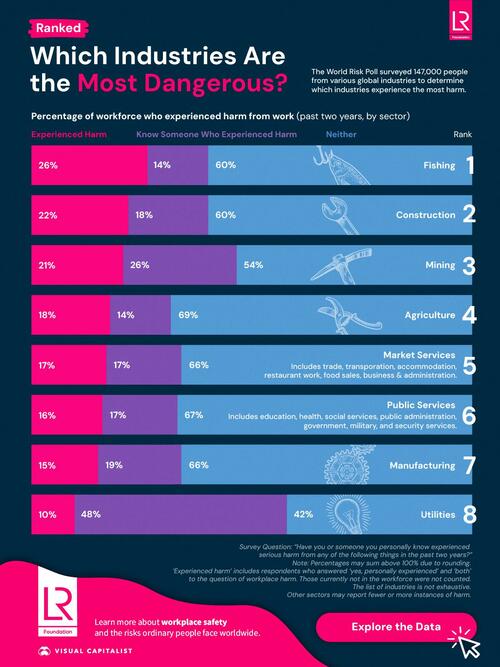Selling The Apocalypse: The Press And Pundits Face Devastating Polls On The ‘Threat To Democracy’
“Democracy dies in darkness” is the Washington Post’s slogan, but can it handle the light?
The Post has been doggedly portraying the election between former President Donald Trump and Vice President Kamala Harris as a choice between tyranny (Trump) and democracy (Harris). Yet when it commissioned a poll on threats to democracy shortly before the election, it did not quite work out.
Voters in swing states believe that Trump is more likely to protect democracy than Kamala Harris, who is running on a “save democracy” platform.
The poll sampled 5,016 registered voters in Arizona, Georgia, Michigan, Nevada, North Carolina, Pennsylvania and Wisconsin.
When asked whether Trump or Harris “would do a better job” of “defending against threats to democracy,” 43% picked Trump while 40% picked Harris.
Notably, this was the same result when President Biden was the nominee. While over half said that threats to democracy were important to them, the voters trusted Trump (44%) more than Biden (33%) in protecting democracy.
Even with the slight improvement for Harris, the result was crushing for not just many in the Harris campaign but the press and pundits who have been unrelenting in announcing the end of democracy if Harris is not elected.
Former Rep. Liz Cheney (R-Wyo.) has declared with authority that either you vote for Harris, or this “may well be the last real vote you ever get to cast.”
I have long criticized the apocalyptic, democracy-ending predictions of Biden, Harris and others as ignoring the safeguards in our system against authoritarian power.
Nevertheless, Harris supporters have ratcheted up the rhetoric to a level of pure hysteria. Recently, Michael Cohen, a convicted felon and Trump’s disbarred former lawyer, told MSNBC that if Trump wins the election, he will “get rid of the judiciary and get rid of the Congress.”
Recently, MSNBC host Al Sharpton and regular Donny Deutsch warned viewers that they will likely be added to an enemies “list” for some type of roundup after a Trump election.
MSNBC host Rachel Maddow also joined in the theme of a final stand before the gulag: “For that matter, what convinces you that these massive camps he’s planning are only for migrants? So, yes, I’m worried about me — but only as much as I’m worried about all of us.”
Rep. Alexandria Ocasio-Cortez (D-NY) was quick to add her own name to a list that seems to be constantly updated by the media. She told podcast host Kara Swisher, “I mean, it sounds nuts, but I wouldn’t be surprised if this guy threw me in jail.”
On ABC’s “The View,” the hosts are becoming indistinguishable from tinfoil-hatted subway prophets. Whoopi Goldberg even explained how Trump is already committed to being a dictator who will “put you people away … take all the journalists … take all the gay folks … move you all around and disappear you.”
Of course, assuming that Cohen is wrong that there will be no courts after a Trump victory, this would require federal judges to sign off on the rounding up of MSNBC personalities, all gay people, all reporters, and, of course, Whoopi Goldberg.
All that is required is for over two centuries of constitutional order to fail suddenly, and for virtually every constitutional actor in our system to suddenly embrace tyranny.
Those pushing this hysteria often curiously cite the January 6 riot as proof that the end is near. Yet that horrible day was the vindication, not the expiration, of our constitutional system. The system worked. The riot was put down. Congress, including Republicans, reassembled and certified Biden as the next president.
In the courts, many Trump-appointed judges ruled against challenges to the election.
Our system was put through a Cat 5 stress test and did not even sway for a moment.
Nevertheless, the same voices are being heard on the same media outlets with doomsday scenarios.
Former Acting US Solicitor General Neal Katyal told MSNBC’s “Morning Joe” ominously, “We are looking at a very possible constitutional crisis and one that’s going to make January 6, 2021, look like a dress rehearsal. And this year, the rogues have had four years to go pro and perfect the big lie.”
In other words: Be afraid, very afraid.
Then, in a New York Times column, Katyal lays out scenarios premised on a complete breakdown of the oldest and most stable democratic system in history.
It is like telling passengers on an ocean liner that we will all drown and then whispering that this is “assuming the crew intentionally scuttles the ship, all bulkheads and sealed departments fail, and every lifeboat and life preserver is discarded.”
But then we are all going to die.
The only way to avoid that watery grave (with the death of democracy itself)? Vote Democratic.
There is, however, some good news in all of this: Despite years of alarmist predictions from Biden, Harris, the press, and pundits, the public is not buying it.
It is not because they particularly like Trump. Many of his supporters seem poised to vote for him despite viewing him as polarizing and, at times, obnoxious.
No, it is because the American voter has a certain innate resistance to being played as a chump. Many of the same figures claiming that democracy is at stake supported ballot cleansing to remove Trump and others from the ballots. They supported the weaponization of the legal process in New York against Trump. Likewise, as Harris insists that she is the only hope for fundamental rights, many cannot fail to notice that she is supporting an unprecedented system of censorship that one court called “Orwellian.”
None of this means that the choice between Trump and Harris is easy. However, Harris’ claim to be the only hope for democracy is proving as tin-eared as running on pure “joy.”
Voters are clearly demanding more than a political pitch of abject fear mixed with illusive joy.
* * *
Jonathan Turley is the Shapiro professor of public interest law at George Washington University and the author of “The Indispensable Right: Free Speech in an Age of Rage.”
Tyler Durden
Thu, 10/24/2024 – 10:25
via ZeroHedge News https://ift.tt/yiBRbXw Tyler Durden























